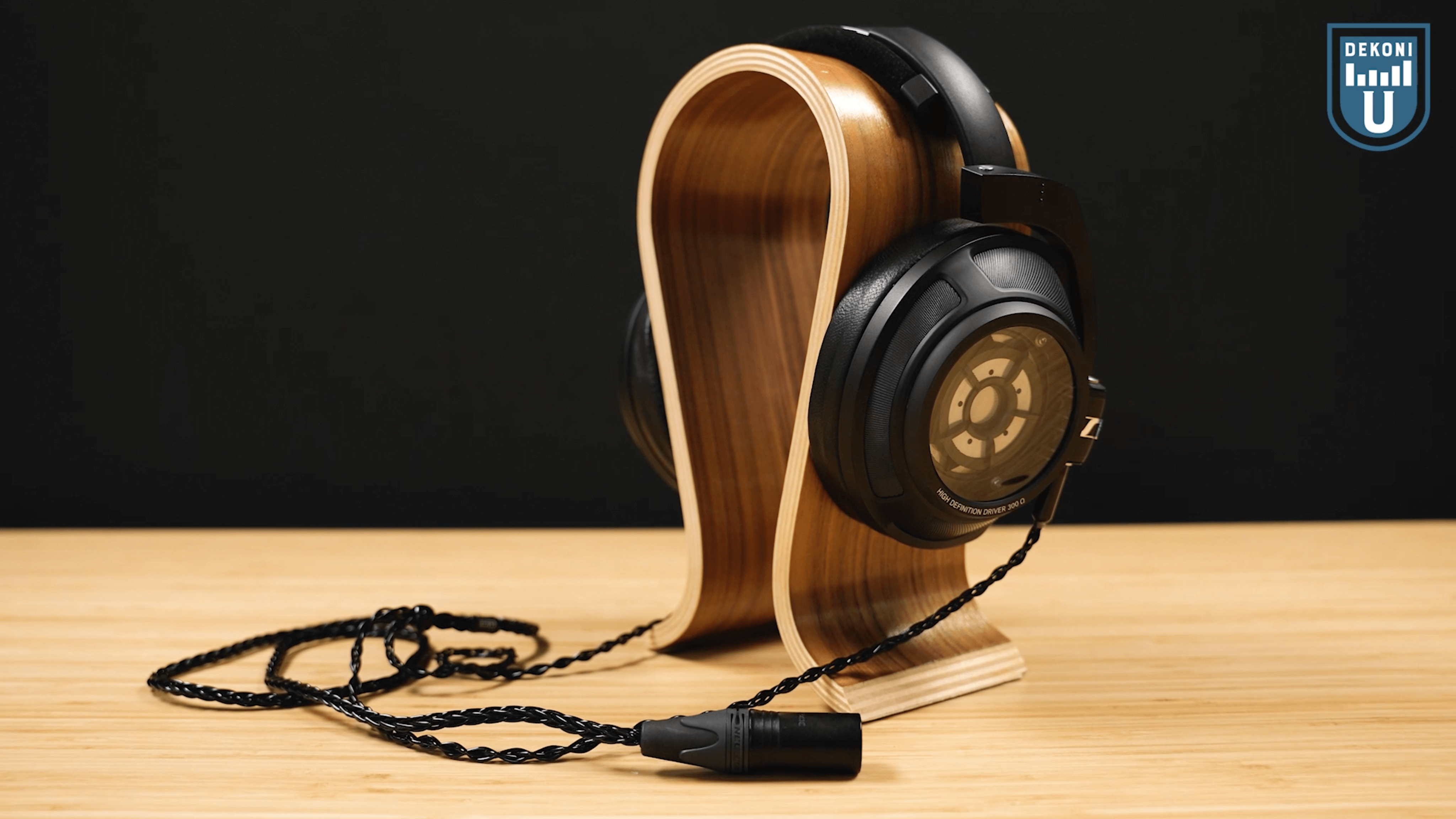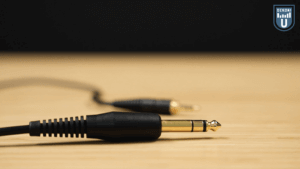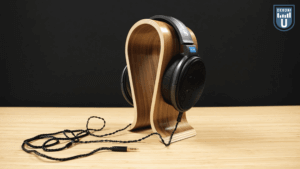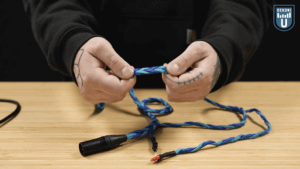
Can You Replace Your Headphone Cables?
Whether it’s to switch from an unbalanced to a balanced system, upgrade the material, or increase or decrease the length of the cable, there are plenty of reasons as to why someone may want to replace the original cables that came with their headphones.
In our previous headphone modding blog post, we discussed replacing your earpads and how this can benefit your listening experience. In this post, we will be discussing how headphone cables impact your listening experience and use case through things such as cable microphonics, length, how easy they are to replace, and more.
We’ve also discussed the differences between balanced and unbalanced cables in a prior post if you’d like to learn more about this topic as well. However, we’ll briefly go over the differences between the two cables and how they can affect the performance of your headphones if you decide to switch your cables in this post as well.
And lastly, if you’d like to watch a video on this topic, you can check out our Dekoni U video where we discuss headphone recabling and how this can affect your listening experience in detail as well.
So, without further ado, let’s dive into headphone recabling and the different types of cables you can use to replace and/or upgrade your listening experience.

What Is Headphone Recabling?

Headphone recabling is simply replacing the cables that came along with your headphones with new ones, or aftermarket cables.
However, some headphones come with permanently attached cables that aren’t able to be replaced by simply un plugging them. In this case, you’d need to modify your headphones by unsoldering the cable and adding in a port or termination so that you can replace the cables with ones that suit your needs.
First, let’s go over the different types of connectors that are found on the headphone cables and what their specific use cases are.
What Are Headphone Cable Connectors?

One common reason for replacing headphone cables is wanting a specific connector type at the end of the cable. Each connector comes with a specific size — which is typically measured in millimeters — and conductor layout.
The conductor layout refers to the layout of the conductors found on the connector. For example, your standard headphone cable connector will use the TRS layout, which stands for tip, ring, and sleeve.
- The tip conducts audio signals for the left channel or L+
- The ring conducts audio signals for the right channel or R+
- The sleeve acts as a shared ground to minimize unwanted electrical noise.
There are other types of connector layouts and formations — such as TS, TRRS, and TRRRS — but every connector will have at least a tip and a sleeve. The most used layout for headphone cables is the TRS.
The most common connector types in the headphone audio space include:
- A 3.5mm or ⅛ inch connector
- A 6.35mm or ¼ inch connector
- A 2.5mm balanced connector
- A 4.4mm connector
- A 3 pin XLR connector
- A 4 pin XLR connector
- And either a lighting or USB C connector
The 3.5mm connector is the most commonly used connector type and is viewed as the industry standard in the consumer headphone audio space. The 3.5mm connector is compatible with almost all types of devices, but is best suited for your mobile devices, such as your phone or computer.
However, with the introduction of the lightning port and the removal of the headphone jack in Apple’s phones, we’ve seen a steady decline in the 3.5mm connector. This is also due to the large rise in wireless headphone products. Although Apple released a lighting jack adapter so that you’re still able to plug in your 3.5mm connector into your phone, there’s still been a visible decline in usage.
The 6.35mm or quarter-inch connector is a larger connector type and is typically used more with professional audio gear. In the past, however, it was used in common consumer devices such as DVD players, but now, they’re mostly used in professional mixers and pro DJ controllers.
Deciding whether to use a 3.5 or 6.3mm connector will depend entirely on the specific audio device you plan to use. Some devices such as headphone amplifiers use a 6.3mm port and a variety of other ports. So, make sure you have a good understanding of your audio equipment before making any headphone cable purchasing decisions.
However, in order to prevent purchasing a bunch of cables with different connectors, you can purchase a headphone cable adaptor. Headphone cable adaptors allow you to use your single cable with an array of different audio devices without needing to switch them out.
Now, if you’re looking to upgrade your headphones from unbalanced to balanced, the cables you decide to use are crucial. Most headphones come unbalanced and require aftermarket re-cabling in order to achieve a balanced system.
When you’re scrolling through the internet to find those balanced cables, you may notice that some commonly used balanced cable connectors are the 3 pin XLR, 4 pin XLR, 4.4mm, and 2.5mm.
Balanced or Unbalanced Headphone Cables?

Modding your headphones from unbalanced to balanced is one of the most common modifications headphone enthusiasts and audiophiles tend to do. But is changing your system from unbalanced to balanced worth it?
Like we mentioned before, we’ve discussed this topic in a previous post and if you’d like to learn more about the pros and cons of both systems, check out our video “Balanced vs Unbalanced Headphone Cables” in the description below.
However, in short, the main benefit of re-cabling your headphones with balanced cables is that they’re able to achieve ‘common-mode noise reduction. This is where the amount of noise or electrical interference is greatly reduced to little-to-no sound at all. This allows audiophiles and other people alike that are seeking perfect, uninterrupted sound, to be much more certain of getting a clearer signal when listening to music every time when comparing it to an unbalanced system.
However, if you’re seeking a balanced headphone system, it will require a little more than just the cables. You’ll also need a balanced audio source — such as a balanced digital audio convertor or amplifier — in order to achieve a fully balanced system.
So, what cables does one need to achieve a fully balanced system? The thing is, there is currently no official industry standard for balanced headphone connections. Instead, there are a few balanced connector configurations that people use.
One method for achieving a balanced system is using two 3 pin XLR cables and inserting them into a “combo” jack in a headphone amplifier. These particular balanced headphone amplifiers come with two XLR cable ports and typically the standard 3.5mm or quarter-inch jack for unbalanced cables.
You can also use a single 4 pin XLR cable to achieve balanced audio if your audio device has that available.
Depending on your audio device, you may need to re-cable your headphones with a 4.4mm pentacon balanced cable or a 2.5mm balanced cable. Each of these cables will help achieve balanced sound but you need to be knowledgeable of your audio equipment in order to decide on the right balanced cable.
Also, note that you cannot just simply switch out the connector instead of the entire cable. Your cable must have at least four conductors with separation of the left and right channel pairs in order to achieve balanced audio. So you will need to replace your unbalanced cables with entirely new balanced cables.
What Are Different Headphone Cable Materials?

Headphone cables are made with different materials, such as copper, silver, gold, rhodium, or even palladium. The most common material being copper.
The material can either be solid or plated. Solid is when the wires have the same material all the way through, whereas plated means the wire is covered with a thin coating of a different material.
Headphone cables are commonly made with copper wire because of their resistance to damage, flexibility, affective conductivity, and affordability.
Even though copper headphone cables are used the most, many people still decide to modify the material and look of their cables.
Headphone manufacturers can’t satisfy everyone’s needs when it comes to cables, specifically, the sheathe and cable length. Stock cables may not come with the best quality or suit your needs for several reasons:
- They’re permanently attached cables
- They come with either straight or coiled cables
- They’re either too short, bulky or lack good cable memory
Another potential issue about stock cables that may require you to swap out the cables is microphonics.
Microphonics is unwanted noise that is created when an audio cable is touched or the cable rubs against a surface such as clothing. The unwanted cable noise is typically a result of cables with poor materials.
If you notice that your stock cables feel a bit cheap to the touch, thin, stiff, or braided in fabric, you may want to replace them with cables made with better and more durable materials.
When it comes to modifying and swapping out headphone cables you may not like/need, you have a large sum of options for upgrading cables that best suits you. You can change the length of your cables so that they aren’t too short and cause restrictions from certain movements or distances.
You can get cables with different platting, solid material, or sheathe depending on what you like. For example, you can have a solid black sheathe like our HD600 cables, or some use silver or silver-plated cables inside a clear sheathe.
You can also acquire high-end and expensive gold or silver cables if that’s what you prefer. There are many different cosmetic and physical adjustments you can make with your cables that can help to deliver the perfect listening experience. The choice is ultimately yours.
Conclusion
Hopefully, you were able to gain a better understanding of headphone cables and how they can affect the quality of your listening experience. Cables are a critical part of your headphone listening experience and should be taken into serious consideration.
Whether you’re looking for a balanced system over an unbalanced system, new materials, or different connectors, you should take the time to do some research so that you’re well informed on what cable upgrade is best for you.
In future posts, we’ll go over more ways you can modify your headphones so you can learn how to fully optimize your favorite pair of cans without needing to purchase new ones.
If you’re interested in replacing your headphone cables with balanced cables, we have balanced 4 pin XLR cables for the Sennheiser HD800, HD800S & HD820 headphones, as well as the balanced 4.4mm pentacon cables for the Sennheiser HD600 series headphones — both 1.2 meters in length.
So, if you’re looking to keep the electrical noise and interference to a minimum, and you have the headphones we listed, upgrade your cables today for a better listening experience at Dekoniaudio.com.






